October is National Chiropractic Month. In observation of this, we are using this blog to educate our patients about chiropractic care. Today we will talk about the seven main types of chiropractic adjustments. Chiropractic care is often referred to as “getting cracked,” in reference to the sound made by gas escaping the joints during an adjustment. The types of adjustment that can cause this aren’t the only options for patients seeking chiropractic care. Several adjustment methods use gentle stretching and manipulation that is quiet and appropriate for people with delicate bones or stage of life care. Let’s take a closer look at the seven most common types of spinal adjustment.
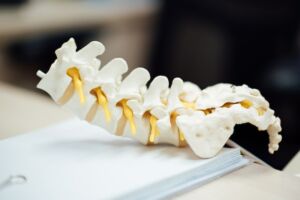
1. Flexion Distraction
This technique uses gentle stretching and manual manipulation to treat acute back injuries. The patient lies face down on a special table that adjusts so your chiropractor can change the angle of your lower back. He’ll slowly use his hands and the table to stretch the spine and realign discs and vertebrae.
This technique improves the range of motion and takes pressure off the nerves. It also encourages blood flow and nutrients to reach the spinal discs. Flexion distraction is commonly used when a patient comes in with acute lower back pain because it’s a gentle, painless procedure. It’s also great for pregnant women. The table allows space for the belly so the chiropractor to gently relieve pregnancy-related lower back and hip pain.

2. The Gonstead Technique
The Gonstead technique is named after Dr. Gonstead, a chiropractor who developed the method in the early twentieth century. It is now taught in many chiropractic colleges.
The Gonstead technique uses the force applied to a specific point along the vertebrae to restore alignment. It can also align the pelvis with the spine, stabilizing the body’s structural foundation. Like the flexion distraction method, the Gonstead technique is typically performed using a special table that can accommodate pregnant women. This method can also be used on the neck with the patient lying down or seated in a chair.
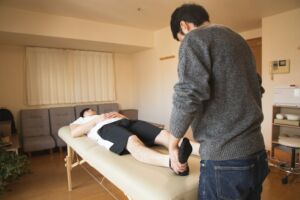
3. The Drop Technique
The drop technique depends on a special table that drops slightly when the chiropractor applies pressure in a thrusting motion to the spine. This makes the technique gentler on the patient and easier on the chiropractor’s body. It’s often used to manipulate spinal curvature and to realign the legs.
Your chiropractor will carefully analyze your leg length using x-rays and visual assessments. Many people have one leg that appears shorter than the other when lying down. Rarely, this may be caused by one leg bone actually being shorter. It’s more commonly caused by misaligned sacroiliac joints or tight muscles around the pelvis. The drop technique can relax shortened muscles and realign the pelvis, so your legs are the same length. This stabilizes your entire frame and treats back, hip, and knee pain. The drop technique is one of the few techniques that can be used to treat spondylolisthesis (a vertebra that has slipped forward of the one beneath it.)
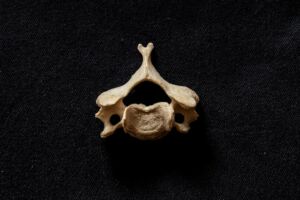
4. The Activator Method
All of the other adjustments in this article are performed by the chiropractor using his hands. The activator method uses a small spring-loaded tool to apply a precise, low-force pulse to a small area. The slow, low-force pressure doesn’t make muscles tense like other adjustments. Muscles that don’t tense can’t resist the treatment and therefore receive more benefits.
The activator method can be used to realign vertebrae in the spine, but it’s also frequently used on arm and leg joints and even for TMJ. It’s ideal for joints in the extremities because it doesn’t require them to bend into positions that could cause more damage or pain.
Since the activator method is low-force, it’s great for elderly patients, children, pregnant women, and those with osteoporosis or arthritis.
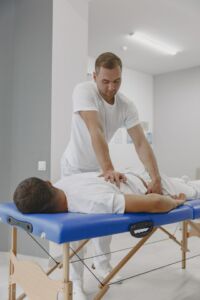
5. The Diversified Technique
This technique uses some of the best moves from other methods to treat spinal misalignments. Your chiropractor will use manual thrusts done in a specific way to target mechanical distortions in each section of the spine. He may have you lie on your side and your stomach as he targets different areas. This technique uses short, low-impact thrusts that often cause a popping sound as the joints are aligned. The diversified technique is the most commonly used chiropractic method, so if you’ve ever been adjusted, there’s a good chance you’ve experienced it.
Chiropractors use the diversified technique to realign the spine, treat disc injuries, and treat injuries to joints outside the spine. It’s the mainstay of chiropractic treatments because it’s gentle and effective and can be modified to suit many different needs.

6. Spinal Manipulation
Also called spinal mobilization, this technique can feel more like a massage than an adjustment. The goal of spinal manipulation is to gently guide spinal joints through their range of motion. It’s beneficial for patients prone to muscle spasms and those with extremely painful conditions. Spinal mobilization is a gentle, comfortable way to enhance joint function and relieve pain. It can also be used on the shoulder and other joints that need to be gently stretched.
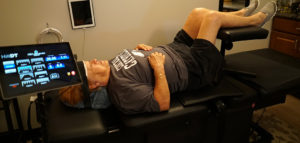
7. Spinal Decompression Therapy
Though it’s not manual chiropractic therapy, spinal decompression therapy is a type of spinal adjustment. It uses a special table and a computer to stretch the spine and create negative pressure between the vertebrae. It’s useful for patients with degenerated, herniated, or bulging discs and those with facet syndrome.
Spinal decompression therapy is like an enhanced version of flexion distraction. It’s able to stretch the spine more than is possible manually. This brings in healing blood flow, rehydrates the disc, and relieves pressure on nerves. Most patients, even those in acute pain, find it comfortable. It’s been FDA-approved as a safe and effective treatment for low back pain and has an excellent track record with patients who haven’t achieved pain relief through other treatments.
Spinal decompression therapy can be used alongside other adjustment methods to relieve pain and heal disc injuries.
Chiropractic Adjustment in Tennessee
At Stanlick Chiropractic, we provide a variety of spinal adjustments to meet your unique needs. Schedule a consultation today to learn more about how spinal adjustment can heal your pain.

